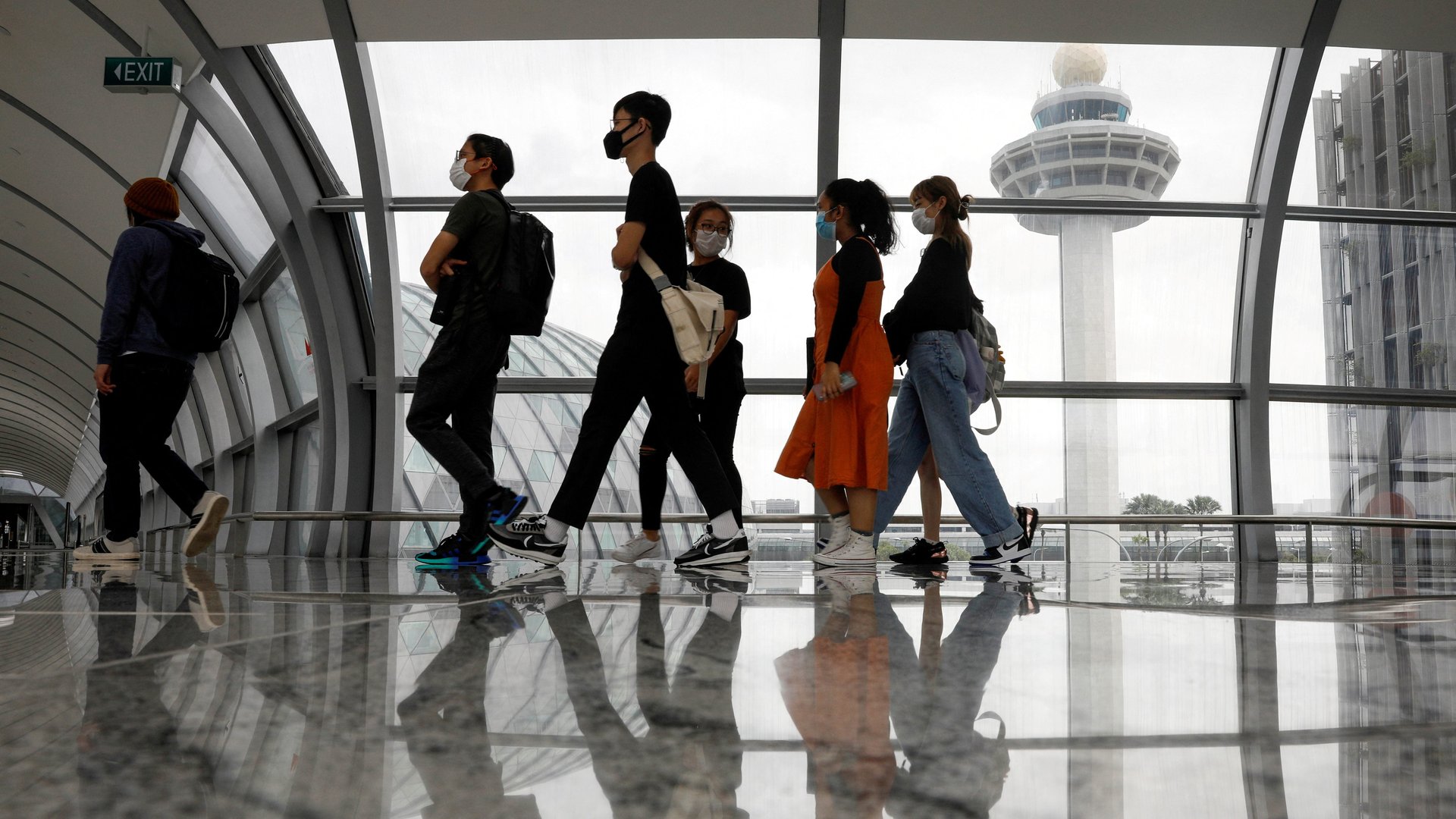Singapore’s covid clarity is a stark contrast to Hong Kong’s covid chaos
Singapore this week will significantly ease coronavirus restrictions in a decisive shift towards “living with covid.” By contrast, Hong Kong is still sticking with a “dynamic zero” covid strategy that seeks to quash case counts, even though the policy didn’t prevent a widespread outbreak this year.


Singapore this week will significantly ease coronavirus restrictions in a decisive shift towards “living with covid.” By contrast, Hong Kong is still sticking with a “dynamic zero” covid strategy that seeks to quash case counts, even though the policy didn’t prevent a widespread outbreak this year.
Singapore will make outdoor mask-wearing optional, and double the group gathering size limit to 10 from tomorrow (March 29). It will also allow fully vaccinated travelers and unvaccinated children to enter the country without a quarantine from April 1. Singaporean prime minister Lee Hsien Loong hailed the changes as “major turning point” in the pandemic fight, when announcing the changes last week.
Two divergent Asian financial centers
At almost the exact same time as the Singaporean leader sketched out a roadmap for how the country would safely coexist with covid, Hong Kong leader Carrie Lam was giving a televised pandemic update. The messages could not have been more different, highlighting a widening gulf between the two Asian financial centers’ pandemic strategies.
While Hong Kong had earlier last week unveiled a timetable for easing covid curbs, there is thus far no indication of when the city will re-open its borders to non-residents, and residents returning to Hong Kong must still undergo a seven-day hotel quarantine.
Instead, Hong Kong authorities are now turning their attention to traditional Chinese medicine. The government’s covid portal this month added a prominent link to information on “anti-epidemic Chinese medicines” (pdf). One such medicinal product is the Chinese-developed Lianhua Qingwen, which is touted for its ability to combat “heat evils assailing the lung” and “unleash…inhibited lung energy.”
Singaporean health authorities last year warned against “unsubstantiated claims or spread unfounded rumours” that herbal products like Lianghua Qingwen can treat or prevent covid. Australia has banned Lianhua Qingwen because it contains ephedra, a key ingredient used to make meth.
Vaccine confidence vs. covid zero
Hong Kong and Singapore had started off with somewhat similar pandemic responses, including widespread masking, strict quarantine requirements for travellers, and aggressive contact tracing. Partly in recognition of each other’s relative successes in containing covid, Hong Kong and Singapore sought to establish a “travel bubble” between the two cities (though that effort was foiled multiple times and has since been scrapped).
When it comes to covid, Hong Kong’s lack of sovereignty means it must follow the heed of Beijing, which has disavowed “living with covid” as a “western” idea, though recent messaging suggests officials recognize that its strategy will eventually have to change. Another major factor behind its divergence with Singapore is vaccine uptake in the two cities.
While the two city’s overall vaccination coverage aren’t too dissimilar, Hong Kong’s undoing lay in its failure to vaccinate its most vulnerable—the elderly—and to counter fears about vaccine risk for these groups. When omicron hit Hong Kong, cases quickly spread and overwhelmed the healthcare system. Deaths spiraled and Hong Kong soon had the highest death rate in the world, surpassing the US’s worst day. By contrast, even though Singapore also had a spike in omicron cases, its elderly were much more vaccinated and overall death rates were much lower.